Tibet
15th century
The right hand is extended in a giving gesture.
Tibet
15th century
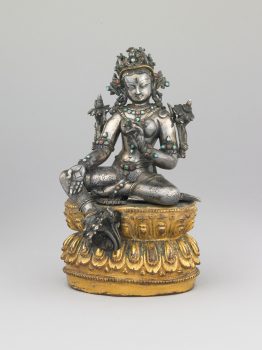
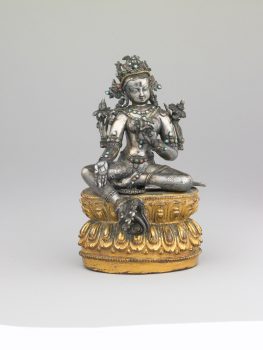
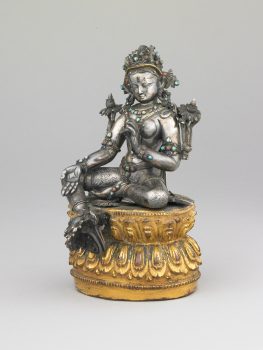
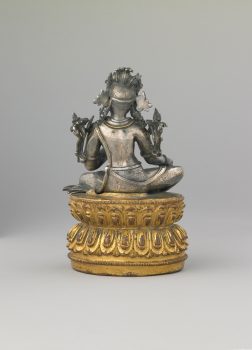
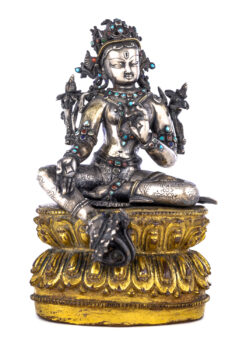
This jewel of a sculpture portrays the most popular and widely venerated female deity in Himalayan Buddhist culture, Green Tara. She is said to represent the activities of all the buddhas, and the invocation formula, or mantra, addressed to her is known by most practitioners of Tibetan Buddhist traditions in Tibet, Nepal, Bhutan, Mongolia, and beyond. She is usually depicted seated with her right leg pendant, her foot supported by a flower stool, and with her right hand in the gesture of granting wishes and blessings and her left hand holding the stem of a flower. She is believed to be quick to aid and protect the devoted seeking her help.This graceful sculpture is ornamented with inlaid turquoise and other semiprecious stones. Tara’s lower garment is finely incised and the double-lotus throne on which she sits is gilded. Her slightly downturned face is that of a young girl, as is described in the texts that relate to her practices.
In Buddhism gender is considered more fluid compared to some other religions. Certain traditions emphasize the importance of all genders in achieving enlightenment. The feminine is considered an embodiment of wisdom and the masculine is an embodiment of method.
A virtuous feeling and deep respect toward an authentic teaching, teacher, or path. Buddhists believe that expansive study, analysis, and meditation are essential steps for cultivating a healthy and enduring devotion.
A meditation technique primarily used in tantric practice that involves imagining a deity in one’s mind or imagining oneself becoming a deity and carrying out various activities. Such techniques are intended to help a practitioner transform ordinary perception and achieve enlightened qualities.
Female bodhisattvas and tantric deities embody specific enlightened qualities such as wisdom, power, and protection, and can be peaceful or wrathful in appearance.
Today, Tibetans primarily inhabit the Tibetan Plateau, situated between the Himalayan mountain range and the Indian subcontinent to the west, Chinese cultural regions to the east, and Mongolian cultural regions to the northeast. During the 7th to 9th century, Tibetan rulers expanded their empire across Central Asia, and established Buddhism as the state religion.
Get the latest news and stories from the Rubin, plus occasional information on how to support our work.